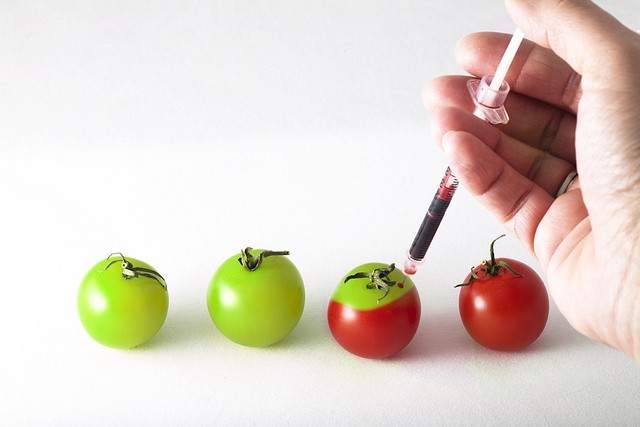
The History
of Genetic Engineering
By Goda
Ponomariovaitė
Introduction
In this summary, I will present a short timeline of
genetic engineering history. The genetic modification has started many
centuries ago in agriculture because people wanted to make their crops more
fertile. Nowadays genetic engineering is more improved. Not long ago genetic
organisms and food appeared. Human clones were also developed.
Key terms
Genetic
engineering - is the process of altering the DNA in an
organism’s genome. https://www.yourgenome.org/facts/what-is-genetic-engineering
Genetically
modified organism - is
any organism whose genetic material has been altered using genetic
engineering techniques. GMOs are used to produce many medications and
genetically modified foods and are widely used in scientific research and the
production of other goods. https://en.wikipedia.org/wiki/Genetically_modified_organism
Manipulation
in chemistry - create/generate, shape and
manipulate chemical substances that can create new elemental or chemical,
toxic, combustible, or explosive substance. http://powerlisting.wikia.com/wiki/Chemistry_Manipulation
Human cloning -
is the creation of a genetically
identical copy of a human. The term is generally used to refer to artificial
human cloning, which is the reproduction of human cells and tissue. https://en.wikipedia.org/wiki/Human_cloning
Summary
According to
sciencegroup.com.uk human genetic modification is the direct manipulation of
the genome using molecular engineering technique. A GMO is any type of organism, plant, or animal,
whose genetic material has been manipulated through genetic engineering. While
bacteria, plants, and animals can all be genetically engineered, the most
popular GMO crops used in agriculture, like corn, soy and cotton.
Humans have
been messing with food and its genes for a long time. Since the advent of
agriculture 10,000 years ago, farmers have strived to improve their crops’
strength. Over the years, as humans chose
certain qualities over others in plants, they molded crops into what they
wanted them to be — bigger, tastier, and juicier. Genetic inheritance was first
discovered by Gregor Mendel in 1865. His theory of genetic was to manipulate
and improve plant species. This is called "classic selection." A
plant of one variety is crossed with a related plant to produce desired
characteristics. Between 1972
and 1973 biochemists Herbert Boyer and Stanley Cohen developed a technique that
allowed them to cut pieces of DNA in certain places, and then attach the pieces
to the DNA of other organisms, using modern biotechnology. An enormous
breakthrough in GMO technology came in 1973, when Herbert Boyer and Stanley
Cohen worked together to engineer the first successful genetically engineered
organism. One year later, Rudolf Jaenisch and Beatrice Mintz used a similar
procedure in animals, introducing foreign DNA into mouse embryos. This was also
around the time that the first debate over GMO health risks began. In 1976,
biotechnology allowed companies to experiment with inserting genes from one
species into another — for medicinal, food, or chemical reasons.
In 1982 the U.S. Food and Drug Administration approves
the first genetically engineered drug, Genentech's Humulin, a form of human
insulin produced by bacteria. This is the first product developed through
modern bioengineering. In 1999 was
produced the first finished, full-length
chromosome of a human. Chromosome 22 was chosen to be first because it
was relatively small and had a highly detailed map already available. The map
is needful for the clone by clone sequencing approach. In 2004 first 'true'
human clones were developed at the Seoul National University in South Korea.
They were 99,9% accurate.
In the future genetic engineering will be improved despite opposition and
support for the use of genetic engineering has existed since the technology was
developed. The postponement continued following
debated papers in which claimed a
negative impact on the environment and health from genetically modified crops.
References
https://www.youtube.com/watch?v=m6eVV6wMX_o